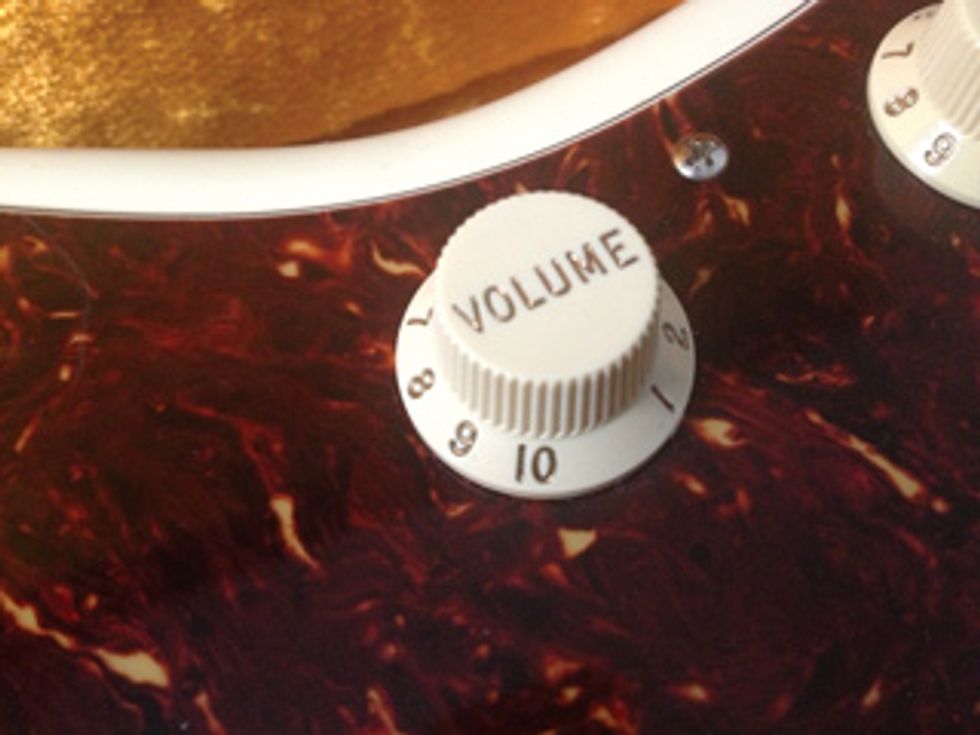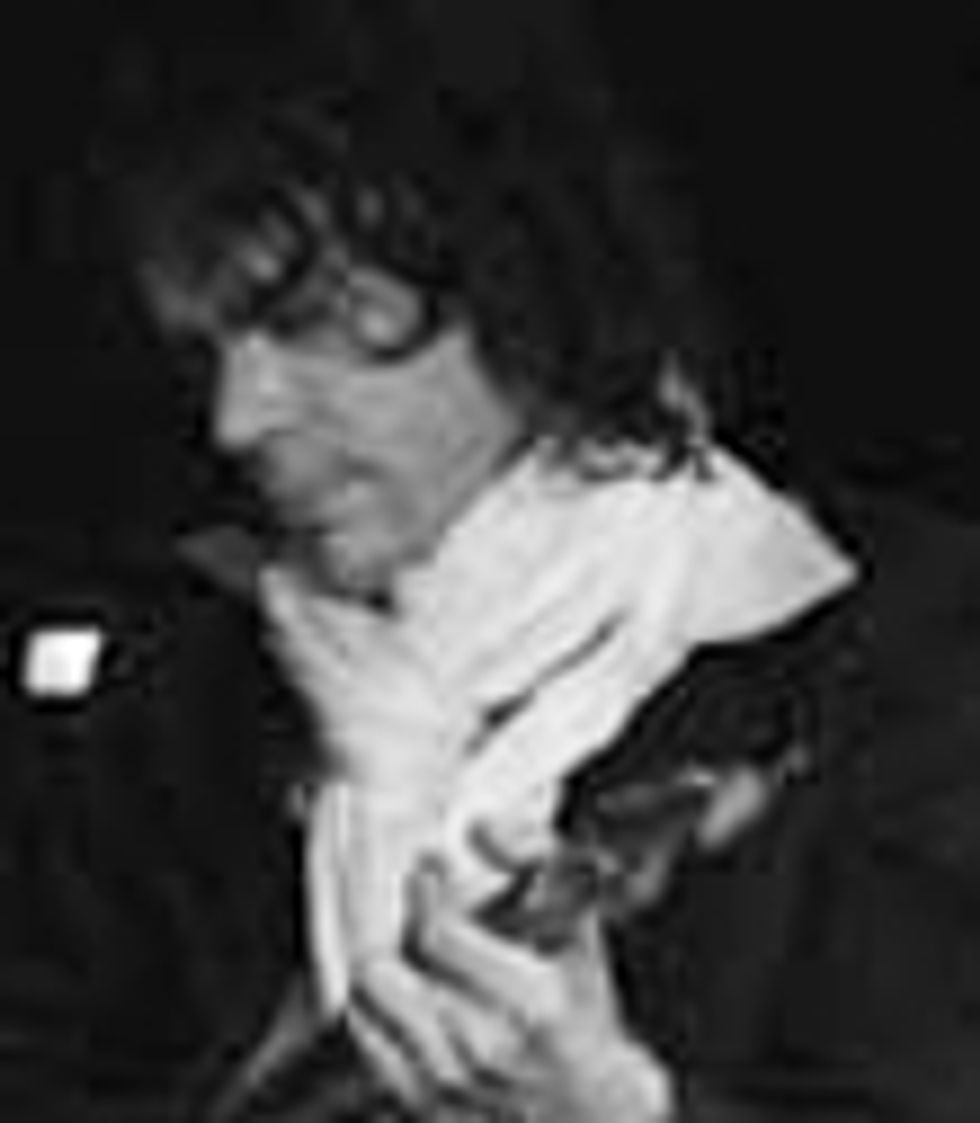
So simple, yet so potent: Your guitar’s volume control offers a vast palette of sonic colors.
Recently I’ve been spending a lot of time listening to Jeff Beck. He doesn’t know this, but it’s been a one-way relationship of pure joy. I’ve known for years what a monster player he is and how he pretty much transcends all other electric guitarists in terms of the emotional range he can express on his instrument.
I knew he plays with his fingers, rather than a pick, and uses the volume control, tone control, pickup selector, and whammy bar in a uniquely interactive fashion to create tones reminiscent of the human voice—crying, shouting, and a myriad of others. I knew he uses a Strat, a Marshall, and a handful of effects, which he judiciously applies as required. But it has only been in the last few months that I really started to gain a deeper appreciation of the man and his music. This realization occurred when I decided to attempt to perform a few of his tunes with a new trio here in New Zealand.
The idea of providing an in-depth dissection of all the components that go into Jeff Beck’s sound would require an essay that extends far beyond the space available in a State of the Stomp page. Then there’s that pesky genius factor too—it’s tricky to try and break that one down. (If anyone knows how, be sure to let me know!)
For this column, I’m just going to look at one facet of Beck’s sound: gain and how he manipulates it with his guitar’s volume knob. Let’s look at this with particular attention to Beck’s tone on the Live at Ronnie Scott’s DVD and album that came out a few years ago.
The signal path—from your fingers through to the speaker—is a series of gain stages. Some of it you have control over, including the guitar volume knob, overdrive pedal, and amp input volume, and some you do not, such as the number of preamp valves, number of power tubes, etc. There’s a wealth of information available online about the specific pickups, strings, guitar, pedals, amp, and speakers that Mr. Beck uses. For the Ronnie Scott’s gig, this basically seems to be a Fender Custom Shop Strat, a Klon Centaur (apparently he shifted over to this from the Pro Co Rat), some modulation effects (rotary speaker, ring modulator, flanger), a rack reverb (Lexicon), and a Marshall JTM45.
Beck’s right hand is a thing of wonder. So is his left hand, but for the purposes of this article, let’s stay focused on his right. Its fingers pluck and snap the strings while simultaneously operating the tremolo arm, the volume and tone controls, and switching between pickup settings. That’s one busy right hand!
Some guitarists operate with the guitar volume set to maximum all the time. There’s nothing wrong with this, but should you wish to venture into adjusting this control, well, the rewards are bountiful. Beck uses the volume control to access many different effects, from the obvious volume swells used to create cello-like tones, to manipulating it to access feedback on certain notes, or simply dialing it back (coupled with a much gentler right-hand pluck) for cleaner, softer sounds. Beck’s volume knob is one of the many ingredients that blend together in a seamless mix of technique in service of expression.
I cannot stress how rich the rewards are for those who start to experiment with guitar volume-knob settings. It’s the easiest way to adjust your gain stage—so obvious, yet so many folks seem to leave it alone. When volume adjustments are coupled with an effect, the sonic palette becomes even more expansive.
For example, plug in a fuzz pedal and adjust the gain level from your guitar. Wind back the volume and the fuzz disappears. Bring up the volume in increments and you’ll find all sorts of tonal treats lurking between the off and completely on position. Your tone will vary too, due to changes in resistance to ground that cause frequencies to roll off. Some guitarists love the warmth and wooliness that happens as you roll down the volume control, but for those of you who don’t, there’s an easy fix: a treble-bleed capacitor. This allows the high-frequency signal to pass out of the guitar as the volume control is wound down. Some folks swear by it, others can’t stand it—it’s totally a matter of taste.
I have them in all my guitars—I like sparkles in my sound (as well as rainbows and laser beams and hermit dudes with wizard wands standing on Scottish mountaintops). For those interested in adding a treble-bleed capacitor, visit the support section of SeymourDuncan.com to find the schematics.
It’s a great mod that’s easily reversible if you don’t like it, and it does open up a whole lot of new possibilities. Go do it!
I realize that technically this month’s column has not been about pedals. I’ve just been reveling in the joy of JB’s playing and wanted to talk with guitarists about it. I’ve never had the pleasure of meeting the man, but I feel indebted for all the beautiful music he has shared with us. Those of you who have not heard him, drop everything immediately and check his music out. There’s a wealth of clips on YouTube, plus he has released all his most recent albums on glorious 180-gram vinyl. Support the man!
 Ben Fulton designs Red Witch analog pedals, which are heard in arenas, studios, and bedrooms around the world. Andy Summers and Reeves Gabrels are pleased he ended up doing this instead of going to prison. His mum is relieved about this, too.
Ben Fulton designs Red Witch analog pedals, which are heard in arenas, studios, and bedrooms around the world. Andy Summers and Reeves Gabrels are pleased he ended up doing this instead of going to prison. His mum is relieved about this, too.











![Rig Rundown: Russian Circles’ Mike Sullivan [2025]](https://www.premierguitar.com/media-library/youtube.jpg?id=62303631&width=1245&height=700&quality=70&coordinates=0%2C0%2C0%2C0)





